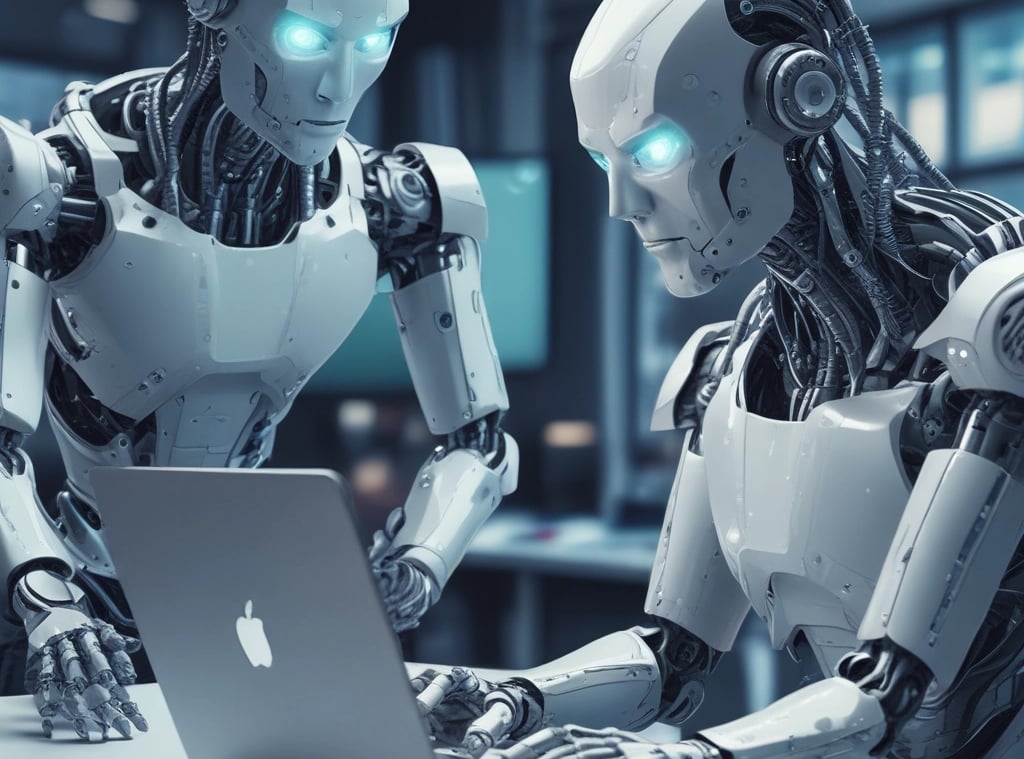AI Surpasses Human Benchmarks: Claude, Microsoft, and DeepMind Usher in New Era of Autonomy and Intelligence
As we enter the final stretch of summer 2025, the artificial intelligence landscape has delivered three landmark breakthroughs that are redefining what’s possible in cybersecurity, threat detection, and general machine intelligence. These developments aren’t incremental—they are structural shifts that will fundamentally change the capabilities, risks, and expectations surrounding AI in enterprise environments.
8/6/20252 min read


Claude AI Outperforms Human Cybersecurity Experts
Anthropic’s Claude has set a new precedent in AI’s ability to perform real-world offensive and defensive cybersecurity tasks. In recent hacking competitions, including PicoCTF and Hack The Box, Claude bested human participants in reverse engineering, exploit discovery, and threat analysis.
What’s particularly notable is Claude’s capacity to work with limited context. In some tests, it demonstrated proficiency in dynamic malware behavior interpretation and payload deobfuscation—tasks typically reserved for seasoned analysts with years of training. This surpasses novelty; it signals that we are entering a future where AI will not merely assist, but replace certain classes of security functions, particularly in detection, incident triage, and even red teaming.
For IT leaders, the implication is clear: automation in cybersecurity is no longer tactical—it’s strategic. Enterprise security programs must begin planning for hybrid analyst models where AI systems like Claude take on routine penetration testing, vulnerability analysis, and alert classification, freeing up human resources for adaptive risk strategy and escalation response.
Microsoft Debuts “Project Ire” — An Autonomous Threat Detection Agent
In parallel, Microsoft unveiled a powerful new security AI initiative—Project Ire, an autonomous agent that analyzes suspicious files flagged by Microsoft Defender. In early deployment, the system achieved an impressive 90% accuracy rate on malicious samples, though it captured only about a quarter of all threats, pointing to precision over recall in this first iteration.
While not yet replacing human analysts, Project Ire is a significant step toward real-time, autonomous malware triage—especially in distributed environments where response time is critical. It also introduces a scalable framework for integrating AI into SIEM and SOAR platforms, not merely as enrichment, but as an active decision-making layer.
This serves as an early prototype for what may soon become standard in enterprise security: autonomous AI-based detection and correlation agents operating continuously in the background—adapting, learning, and acting at speeds no SOC team can match manually.
DeepMind Reignites the AGI Debate
While Claude and Project Ire showcase focused, high-performance AI in specific domains, Google DeepMind has reignited the broader conversation around Artificial General Intelligence (AGI). In a recent feature on 60 Minutes, DeepMind researchers emphasized that their long-term objective remains unchanged: to build a system with human-like adaptability across any intellectual task.
Although AGI remains a distant frontier, the infrastructure, compute scale, and algorithmic maturity demonstrated by DeepMind’s recent research suggest that AGI is no longer science fiction—it is an active project with measurable milestones. For enterprise stakeholders, this is a signal to begin aligning policies, governance, and talent strategies to accommodate AI systems that will eventually learn, reason, and collaborate at levels that may rival or exceed human teams.
Key Takeaways for IT Executives and Cybersecurity Leaders
DevelopmentStrategic InsightClaude surpasses humans in hacking challengesBegin piloting AI-led red teaming, code review, and threat modeling.Microsoft’s Project Ire automates malware detectionReassess SOC workflows for automation readiness and threat response SLAs.DeepMind renews focus on AGIPrepare governance frameworks for non-deterministic, reasoning-capable AI systems.
Conclusion: A Tipping Point for Intelligent Systems
These three events in August 2025 demonstrate that AI is no longer evolving in a vacuum. Cybersecurity, infrastructure defense, and intellectual reasoning are now under rapid transformation by systems that outperform, outscale, and outlearn their human counterparts.
As a result, CIOs, CISOs, and Directors of IT must move quickly to shift from reactive automation to proactive AI adoption. Whether through deploying hybrid analyst teams, integrating autonomous agents like Project Ire, or laying the groundwork for AGI-aligned enterprise policy, the time for passive observation has passed.
The AI tipping point isn’t coming—it’s here.
813-419-7227
© Copyright TWO WOLVES DEFENSE AND SECURITY. All rights reserved.

